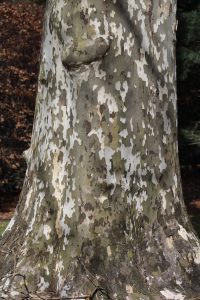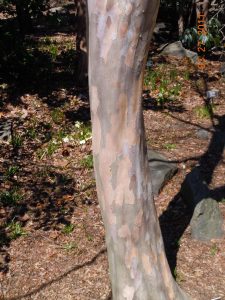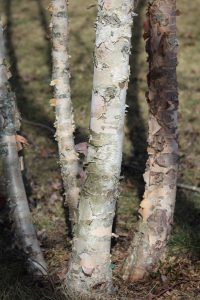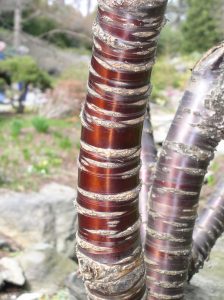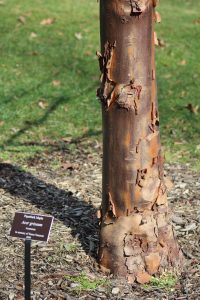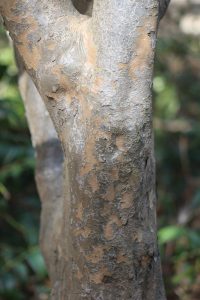With spring rapidly approaching there’s no better time to appreciate the silhouettes of our trees, especially those with attractive bark. This is a valuable ornamental feature often overlooked. While you are likely familiar with some of the larger trees that have striking bark, such as American or European beech, American sycamore or London Plane tree, there are many trees suitable for smaller landscapes which will catch your eye.
Perhaps you are familiar with Stewartia psuedocamelia, or the other Stewartia species which have white camellia-like flowers in the early summer. But did you know that as they mature they develop an exfoliating bark in a patchwork of copper, tan, olive and lavender? Stewartia spp. are typically pest free and offer fall color too. Every yard should have one! Another tree offering bark in similar colors are the Crape Myrtles, Lagerstroemia indica hybrids. Crape myrtles are widely known for their late summer flowers in shades of pink, red, purple and white. When looking for a crape myrtle for your landscape select varieties best suited for our colder winters and then chose a flower color.
Maybe you have a wet site where many trees do not do well. I have just the solution for you, and it has attractive peeling bark to boot! The tree I’m referring to is called a river birch, Betula nigra. Young trees have papery bark in shades of cream, salmon, orange brown, and cinnamon brown which peels freely. As the tree matures the trunks become dark reddish brown to gray-brown in color with plate-like scales. River Birch also boasts resistance to the bronze birch borer, a devastating pest of many other beautiful birch trees.
A lesser known tree with highly ornamental bark is the Paperbark cherry, Prunus serrula. Much like most other flowering cherries, its white flowers are short lived and it may be prone to disease and insect pests, but the bark is incredible! I came across this tree in the New York Botanical Garden and was wowed! The bark is a glistening coppery red-brown, looking more like polished copper than living bark. I’m still contemplating including this one in my own landscape despite the pest management it will likely require.
Before leaves and flowers emerge this spring, get out and really look at your trees. Botanical gardens and arboretums are a great place to see some of these trees and others that are especially beautiful in winter. Take notes and photos. Consider planting one or more of these trees with beautiful bark to give your landscape four season appeal!
Article and photos by Alice Raimondo, CCE Suffolk Horticulture Consultant

